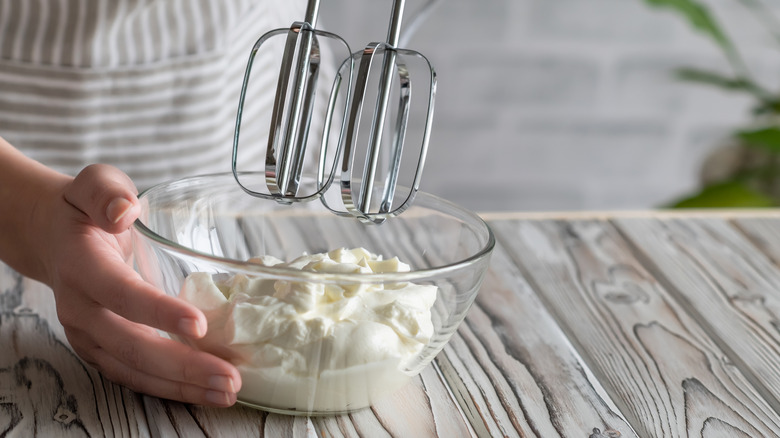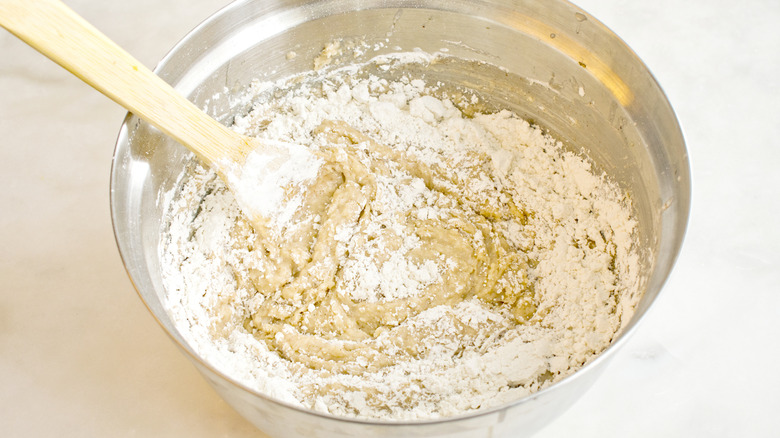What Happens When You Undermix Cake Batter
If you've tried making a cake before, chances are you've figured out what happens when you overmix your batter. While your cake still tastes amazing, you may have ended up with a smaller, denser cake than you expected. That's because the amount of time you mix your cake batter, and what you use to mix it, has a major effect on the structure of your cake, per Freshly-Baked.
Each ingredient of a cake recipe has a different function beyond being delicious. Cake ingredients are meant to balance each other out — proteins and fats that help secure the structure of your cake are weakened by sugar and any non-dairy liquid ingredients. Having too much or too little of something can lead to a crumbling cake when you're done baking.
Mixing, too, can have just as much of an impact on how your cake turns out as the ingredients do. As Mark Bittman writes in "How to Bake Everything," there are many ways to combine all of your ingredients. "All of which can have as much of an effect on the final texture of the dish as the ingredients themselves; it's rarely a matter of simple addition" he explained (via Food52). But while many recipes are careful to warn bakers about the dangers of overmixing, rarely do they ever mention not to undermix your batter.
Undermixing can be as bad for your cake batter as overmixing
When you're baking a cake, it's important to follow your recipe's exact instructions. For instance, like with pie crust, if your recipe calls for butter or another fat, you must remember to keep your batter chilled, so the butter doesn't melt before you bake it (via Food52). As The Cake Blog explains, not mixing your ingredients for long enough can result in poor outcomes, similar to overmixing. In the test they did, under-creaming butter and sugar resulted in not only sugar grains still being visible after baking, but there wasn't enough air mixed into the batter, which resulted in a smaller, denser cake.
According to Bake School, creaming the butter is the part of the mixing process that allows air into the butter. The other part of the mixing process you need to pay attention to is when you combine your dry ingredients with your eggs and creamed butter. Once you add your dry ingredients, you just want to mix your batter enough so that the dry ingredients disappear. Making sure everything is mixed but not blended ensures you won't end up with pockets of butter or flour in your cake after it's done baking.

